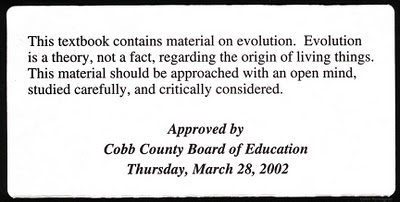A disturbing news story has been making the rounds about cyanide-producing grass killing cattle in Texas. Initial reports from news outlets such as CBS mistakenly described the grass as “genetically-modified” and while some subsequent reports clarified the issue this has not stopped anti-GM bloggers and activists such as our old friend Anthony Gucciardi from repeating the story in a misleading effort to whip up more fear.

Common bermudagrass on the left & Tifton-85 on the right with improved yield and quality
The grass in question, Tifton 85, is actually a conventionally bred bermudagrass hybrid that has been in use since the 1980′s largely for forage. While such an event has never been reported with Tifton 85 before, poisoning events with other forage are not unheard of and are usually driven by environmental factors such as drought. A number of forage grasses and other crops have cyanogenic potential, farmers growing forage and ranchers raising cattle have been aware of this issue for a long time and are already advised to take steps to avoid such problems. While this latest incident justifies a closer look at Tifton 85, it is not in anyway evidence against the use of genetically engineered crops. In the face of widespread public misunderstanding and fear of technologies such as genetic engineering and the anti-scientific threat of GMO labeling bills in California and elsewhere, the false framing of this news as an anti-GMO horror story is not just dishonest but is downright harmful to the public understanding of science.
Such cases of misidentification and misrepresentation are not uncommon in the anti-GMO community. It seems that anytime something goes wrong in the food system or something “scary” is discovered, “GMOs” are one of the first culprits that jump to mind. A prime example was the reporting of a 2011 study about microRNAs from rice. While GM rice is not currently on the market and the study was performed using conventional rice, not GM rice, this did not stop news outlets such as the Atlantic from presenting the study as an example of “the very real danger of genetically modified foods”. Nor have subsequent rebuttals prevented many anti-GM activists from perpetuating a misleading representation of the study. A retraction or correction of a false story generally isn’t enough, people tend to remember the myth and forget the correction, news outlets must strive the get the story right in the first place.
Some cases of misidentification may be the result of innocent (though willful) ignorance. Many people are prone to assuming that unfamiliar or “strange looking” produce is a GMO, rather than bothering to look deeper. The Grapple, a grape flavored apple, is a common example of this. Produced by soaking conventional apples in a bath of grape flavoring, Grapples are not a genetically engineered product but clear labeling of this fact has not prevented many people from spreading false assumptions. Another interesting example is the fruit salad tree. By grafting different cultivars within the same family onto different branches of the same tree, growers were able to create trees that produced multiple different fruits, in the same family (stone fruit, citrus, apple, and nashi varieties are available), simultaneously. New and foreign cultivars are often misidentified by the public as GMOs as well, Plutots, Papples, and Tangelos have all been mistakenly presented as examples of “frankenfood”. Unfortunately many cases of misidentfication appear not to be mere mistakes but rather a result of prejudicial and lazy thinking.
A good example of this was the reaction to the 2011 Listeria outbreak that was traced back to a Colorado melon farm, Jensen Farms. While most of those familiar with the food system understood the nature of relativity rare Listeria outbreaks, other more conspiratorially-minded people saw a cover-up. One anti-GMO blogger wrote that she believes “this is probably further proof of the damages from genetically modified SEEDS” and Jensen Farms had to respond to multiple inquiries regarding the nature of their seed, repeating, “we do not use gmo cantaloupe seed.” I have no doubts about the truth of Jensen’s claim considering that GM melons are not currently on the market, and how GM cantaloupes, if they existed, would even cause Listeria is beyond me. Another case of a perceived GMO cover-up was the introduction of the Kumato, a hybrid black tomato, to the UK market. While most consumers saw no issue with the tomato, at least one blogger wrote a post titled, “Are Sainsbury’s Black Tomatoes Genetically Engineered (GMO)?“, citing her belief that the public was being duped. As evidence, the blogger quotes a patent for parthenocarpy genes in tomato,
And here’s the patent for Kumatoes (Sainsbury’s black tomatoes): “21. A S. lycopersicum plant according to claim 1, wherein the plant is of a commercial tomato type selected from the group consisting of cherry, cocktail, mini plum, plum cocktail, plum, round, and beef.”
Yep….what the heck is “beef” genes in there?
The misunderstanding here should be obvious, the patent does not refer to “beef” or bovine genes, rather it is referring to the name of a variety of tomato. In the end the anti-GMO crowd is so desperate to latch onto anything that might support their preconceived fears and so credulous that they can even be fooled by non-existent crops such as the mythical blue strawberry and GMO cannabis. The anti-GM community is going to have to do a lot better than this if they wish to be taken seriously. Once again, in the face of widespread public misunderstanding and fear of technologies such as genetic engineering and the anti-scientific threat of GMO labeling bills in California and elsewhere, the false framing of agricultural news as anti-GMO horror stories is not just dishonest but is downright harmful to the understanding and advancement of science.
Further Reading:
Accuracy in Reporting Matters by R343L
GMO food: Hybrid poison grass that kills Texas cattle not genetically modified by Linda Gentile
Potential Toxicity Issues with Tifton 85 Bermudagrass from Dr. Larry Redmon, Extension Forage Specialist





